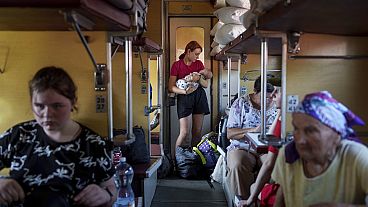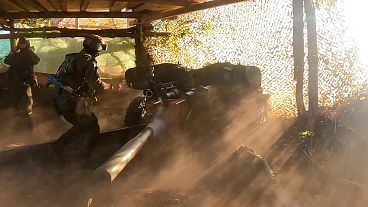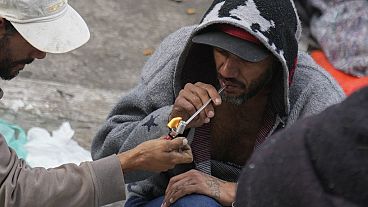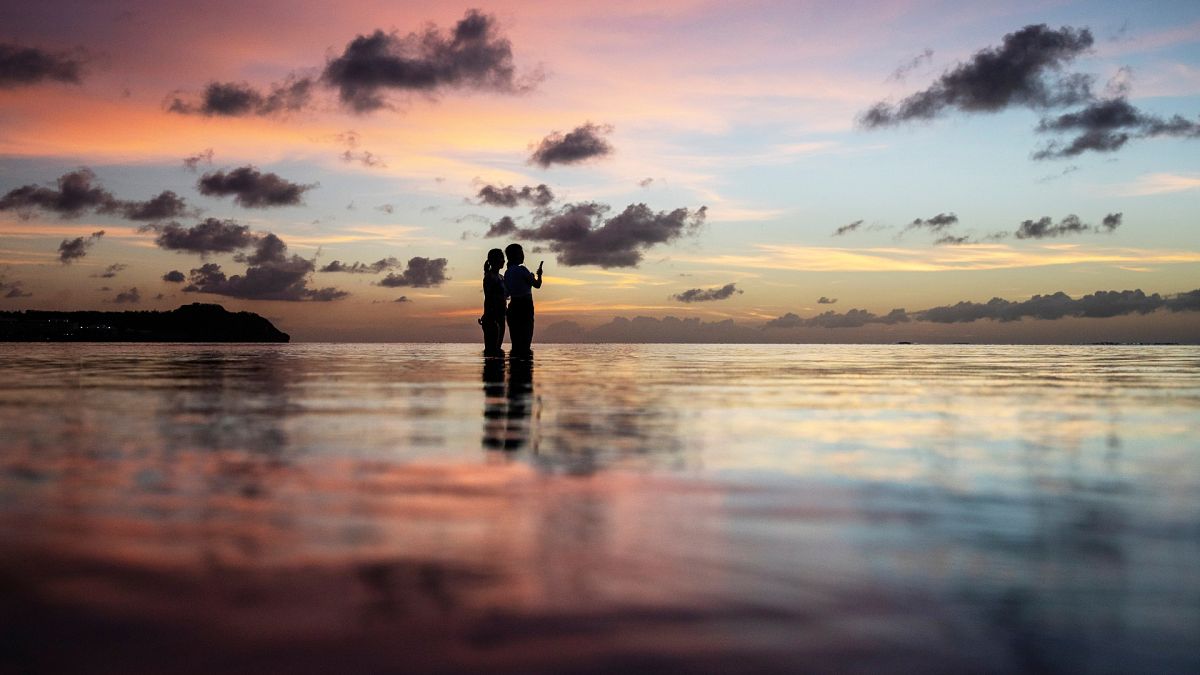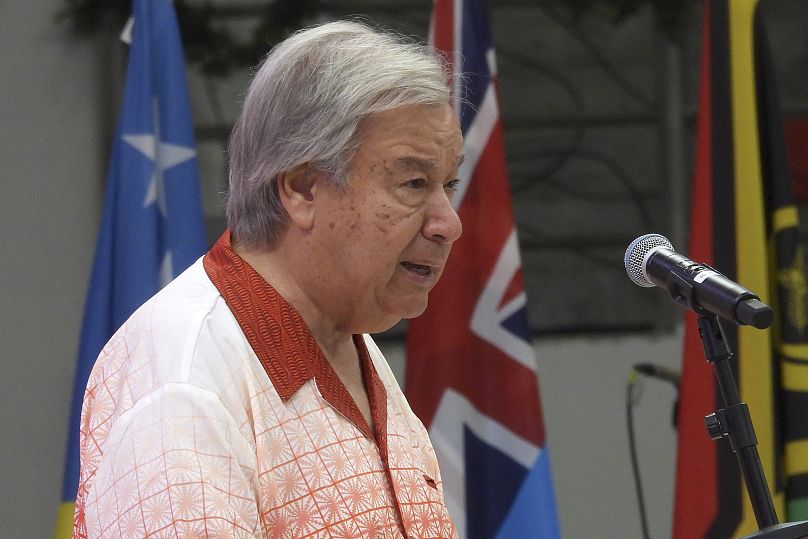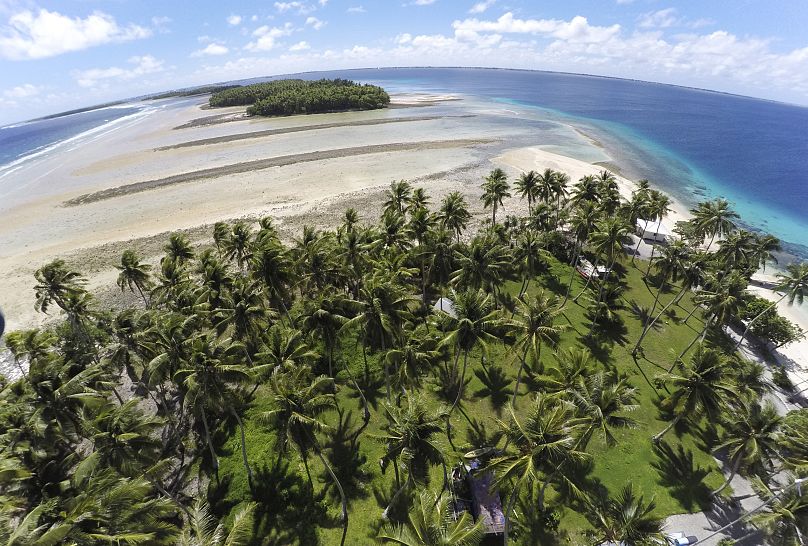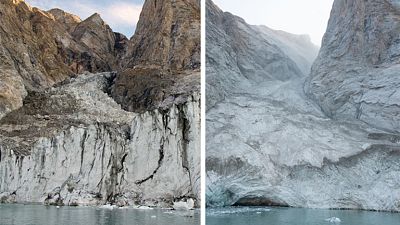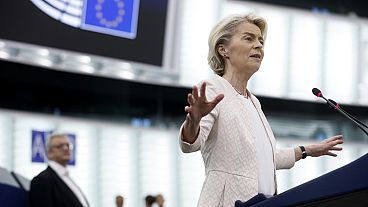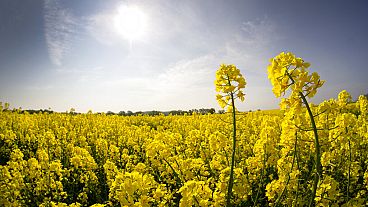UN Secretary-General Antonio Guterres called for the world to “massively increase” finance and support for vulnerable countries.
Rising sea levels are a “worldwide catastrophe” which uniquely threatens Pacific Islands, UN Secretary-General Antonio Guterres has warned.
The UN chief raised the alarm at a meeting of the Pacific Islands Forum - the most important political gathering in the region - in Nukuʻalofa, the capital of Tonga on Tuesday. He also released two UN reports which detail disastrous changes to the ocean caused by climate change.
“The ocean is overflowing,” Guterres said. “This is a crazy situation: Rising seas are a crisis entirely of humanity’s making. A crisis that will soon swell to an almost unimaginable scale, with no lifeboat to take us back to safety.”
He issued a “global SOS - Save Our Seas - on rising sea levels” calling on world leaders to take definitive action at COP29 later this year.
‘Transforming a lifelong friend into a growing threat’
The first report of the two UN reports, compiled by the World Meteorological Organization (WMO), highlights how sea level rise is putting Pacific Islands in peril.
As our world has warmed, oceans have absorbed around 90 per cent of global heating caused by humans.
“Human activities have weakened the capacity of the ocean to sustain and protect us and - through sea level rise - are transforming a lifelong friend into a growing threat,” said WMO Secretary-General Celeste Saulo in a statement.
“Already we are seeing more coastal flooding, shoreline retreat, saltwater contamination of freshwater supplies and displacement of communities.”
Despite accounting for just 0.02 per cent of global emissions, Pacific Islands are especially vulnerable. On average, they lie just one or two metres above sea level.
Sea-surface temperatures in the southwest Pacific have risen three times faster than the global average, the report says. Marine heatwaves in the region have almost doubled in frequency since 1980 and are lasting longer and becoming more intense.
Rising seas also amplify the frequency and severity of storm surges and coastal flooding. The southwest Pacific has seen 34 of these mostly storm or flood-related “hydrometeorological hazard events” in the last year, according to the WMO, causing over 200 deaths and impacting more than 25 million people across the region.
Sea level rise is no longer a ‘distant threat’
In 2021, the IPCC said that sea levels were rising at a rate unprecedented in at least the last 3,000 years due to human-induced global warming. But since then new research on climate ‘tipping points’ and melting ice sheets has scientists concerned that the rise could be much bigger and occur faster than previously thought.
The second report warns that rising sea levels are “no longer distant threats” - particularly for Pacific Islands. They are already affecting the lives and livelihoods of coastal communities and low-lying island nations around the world today as ice on land melts and seawater expands from global warming.
Guterres warned that sea level rise has the “unparalleled power to cause havoc to coastal cities and ravage coastal economies”.
The Pacific Islands are “uniquely exposed” as 90 per cent of people live within 5 kilometres of the coast and half of all infrastructure is within 500 metres of the sea, he added.
The global average sea level has already risen more than 10cm since 1993 and the rate at which it is rising has doubled since the 1990s.
“Without drastic cuts in emissions, the Pacific Islands can expect at least 15 centimetres of additional sea level rise by mid-century and more than 30 days per year of coastal flooding in some places.”
A 2C temperature rise could lead to the loss of almost all of the Greenland ice sheet and much of the West Antarctic ice sheet. Future generations would then see an “unstoppable” sea level rise of 20 metres over a period of millennia. On our current trajectory, 3C of warming, that rise would happen much more rapidly over centuries instead.
“That spells disaster: wide-ranging and brutal impacts, coming far thicker and faster than we can adapt to them - destroying entire coastal communities,” said Guterres.
More finance and support is needed for vulnerable nations
One of the key issues expected to be on the agenda at COP29 in Azerbaijan later this year is an increase in finance for countries vulnerable to climate change. A previous commitment for wealthy countries to mobilise $100 billion (€89.6bn) a year is due to expire.
Guterres called on world leaders to “step up” to drastically slash global emissions, “massively boost climate adaptation investments”, and increase support for vulnerable countries.
He said limiting global warming to 1.5C was the only hope for preventing the irreversible collapse of ice sheets as well as the catastrophes that accompany them.
“That means cutting global emissions by 43 per cent compared to 2019 levels by 2030, and 60 per cent by 2035.”
Finance and support for vulnerable nations could also reinforce adaptation measures such as early warning systems for the hazards they face. Despite being a lifeline, Saulo said they are available to just a third of Small Island Developing States globally.
“The world must look to the Pacific and listen to science,” Guterres said. “If we save the Pacific, we also save ourselves.”


